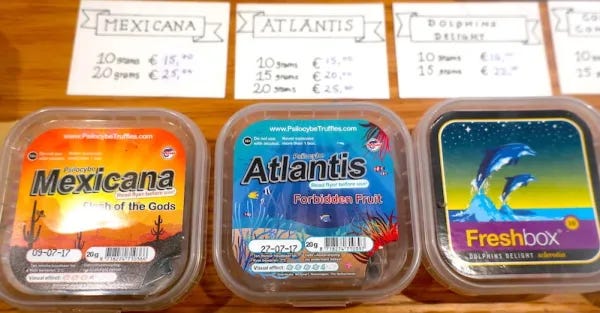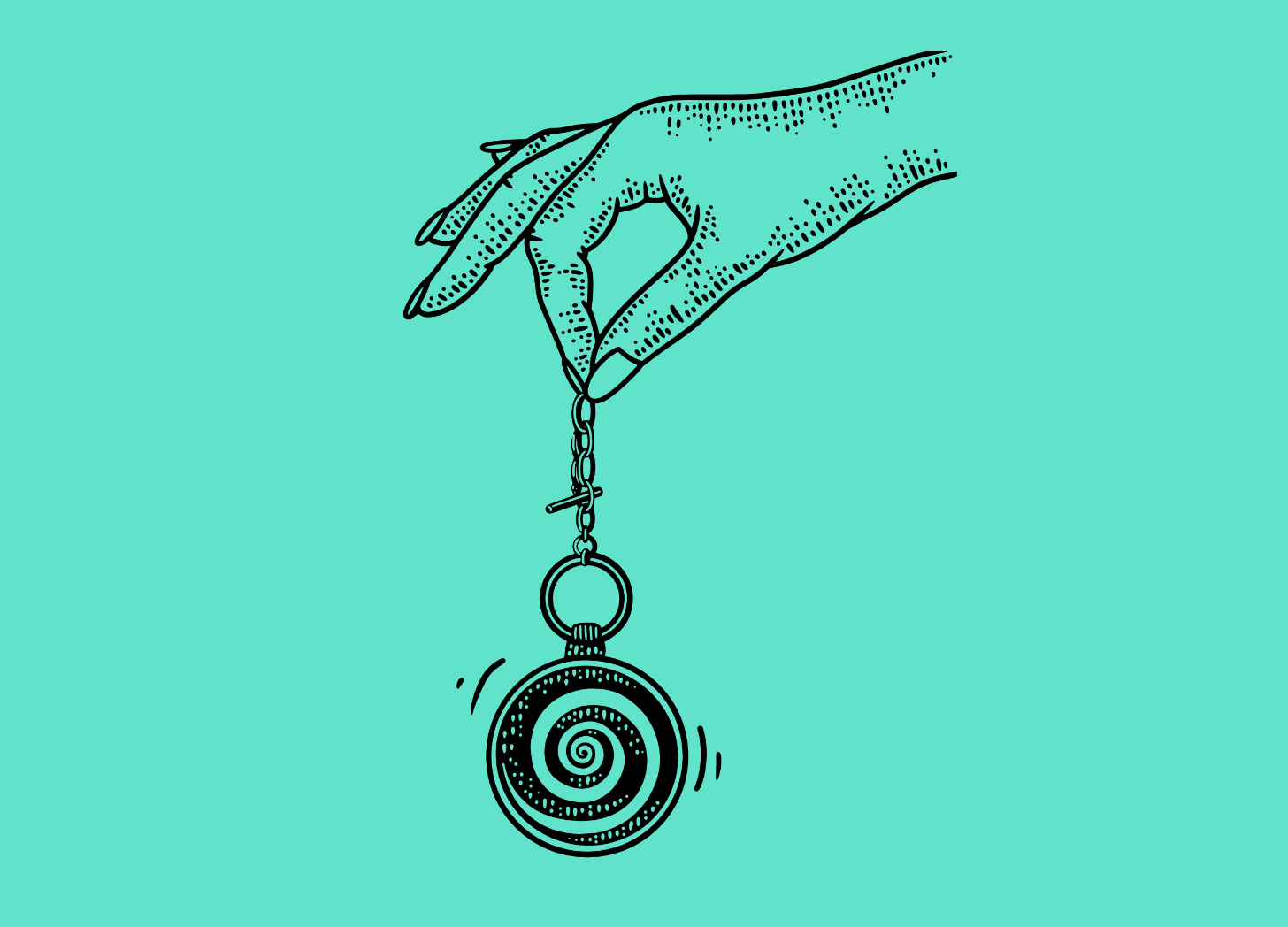Inside Holland’s Psychedelic Subculture: The Curious Dutch Magic Truffle Market
The Netherlands' Magic Truffle market is legal but chaotic, with mislabeled products, absurd claims, and curious loopholes that both intrigue and mislead.
While wandering down the charming streets of Amsterdam this summer, I couldn't help but explore the magic truffle menus that lined the windows of the many Smart Shops in the city.
These menus didn't catch my eye for their psychedelic artwork or intriguing products but rather for the vast and confusing range of truffle types they displayed.
To the tourist who's new to psychedelics, the promise of different truffles for different effects sounds exciting, but to someone deeply immersed in the study of psychedelics, it sounds a little sketchy...
The psychedelics industry in the Netherlands is peculiar. Magic mushrooms themselves are illegal, but their underground sclerotia, dubbed “magic truffles,” are perfectly legal.
These psychedelic growths are cultivated commercially on a large scale. However, they’re often falsely labeled — likely in a bid to lure stoned tourists who are eager to part with their hard-earned money to indulge in the mind-bending fruits of the Dam.
While perched on a stool in one of Amsterdam's finest coffee shops, I decided to investigate and learn more about what makes this peculiar industry tick.
Holland's Strange Psilocybin Laws
Holland is a glitch in the matrix of Europe. It's the most liberal European country in terms of drug legislation. So-called “soft drugs” — including cannabis, psilocybin, and kratom — have been decriminalized since 1976, thanks to the “Opium Act.”
The Opium Act distinguishes between hard and soft drugs — “hard drugs “being substances like cocaine, heroin, and amphetamines, and “soft drugs” being cannabis, psilocybin, kratom, and other natural psychoactive substances. The Act allows for the sale and possession of soft drugs under certain conditions but increases the penalty for the production and sale of hard drugs.
Magic Mushrooms Are Banned in the Netherlands
Magic mushrooms were legal in the Netherlands for decades, and for a time, Holland led the world in magic mushroom cultivation.
However, in 2008, the Dutch government banned them after responding to a series of publicized deaths that were misguidedly blamed on psilocybin mushrooms.
Although there had been a few recorded hospitalizations from psilocybin mushroom use previously, it wasn’t until the death of a 17-year-old French student named Gaelle Caroff that the Dutch government began to legislate a ban.
Gaelle threw herself off a bridge in Amsterdam while under the influence of magic mushrooms, tragically ending her life.
With the public eye on these “demonic shrooms,” several publicized cases followed. Just weeks later, another French citizen was found in the back of his van covered in blood. The man had ritualistically sacrificed his dog with a pair of kitchen scissors, supposedly while under the influence of psilocybin mushrooms.
In response to these horrific cases, the Dutch government made the cultivation, sale, and use of psilocybin-containing mushrooms illegal in December 2008. They gave cultivators and distributors just 10 days to dispose of their mushroom stock.
However, one type of psychedelic fungi slipped through the cracks…
The Rise of the Dutch Truffle Market: An Unusual Loophole
Despite banning psilocybin-producing mushrooms, the Dutch government decided not to ban psilocybin-producing sclerotium — AKA: magic truffles. Most likely, this was simply an oversight by Dutch regulators — the wording of the legislation specifically stated that the fruiting bodies of psilocybin-containing species are illegal but made no mention of the mycelium growing underground.
Some believe this was a conscious decision made under the assumption that the underground parts of the mushroom don't produce psilocybin (they do); others believe they were left off due to ignorance of what mushrooms are and how they work.
After savvy vendors started selling psilocybin-containing sclerotia (which only a few species produce), the government implemented a law requiring vendors to sell only fresh truffles — not dried or processed in any way.
This move was unusual because magic truffles contain the same psilocybin and psilocin found in the mushrooms that were blamed for the death of Gaelle Caroff.
Regardless, the government's decision provided a way to produce, sell, and consume this natural psychedelic legally. And so, the Dutch magic truffle market was born.
Today, the Dutch magic truffle market is estimated to be worth over 100 million euros — around 112 million US dollars.
How Truffles Are Made
After psilocybin-containing mushrooms were outlawed in 2008, the previously legal Dutch magic mushroom grow operations sold their shroom stock and immediately began producing truffles.
Magic truffles are sclerotia — hard masses of densely packed mycelium that form underground. The mushroom makes sclerotia as a defense mechanism to survive harsh environmental conditions. Sclerotia allows the fungus to survive when conditions become too harsh to survive.
The hard, fibrous sclerotia can remain dormant underground for years until conditions are right for the fungus to sprout mushrooms, release spores, and start the cycle all over again.
To grow sclerotia, cultivators first need to obtain genetics for one of the sclerotia-forming psilocybes. The most popular are Psilocybe mexicana and Psilocybe tampanensis.
Normally, shrooms are incubated in a sterile growing medium and placed in fruiting chambers that provide the fungus with the environmental conditions it needs to initiate mushroom formation. Truffle growers skip the latter stage, instead leaving their shrooms to continue incubating until they form dense sclerotia.
Misleading Labeling
Enlightened by how the magic truffle market began in Holland and how truffles are produced, I wondered even more why so many Smart Shops were falsely labeling them.
Most of the tourist hot spots across Amsterdam and Rotterdam sell different "strains" of recreational magic mushrooms, each with different effects. Some are labeled for inducing creativity, some for improving focus, and others for their "spiritual" qualities…
Or so they claim…
You’ll find truffles with all sorts of wacky names in Dutch Smart Shops. You’ll find the usual Philosopher's Stones (Psilocybe tampanensis) and Flesh of the Gods (Psilocybe mexicana) truffles — these are legitimate species. However, you’ll also find truffles like MushRocks, Dragon’s Dynamite, High Hawaiians, Golden Teachers, Purple Rain, Royal Beluga, and many more.
Most of these “truffle strains” were invented by marketers to simulate variety. They consist of the same stock of commercial Psilocybe mexicana, or Psilocybe tampanensis sclerotia, rebranded under different names to provide tourists with a false sense of selection.
Vendors will buy raw truffles, repackage them under various names, and slap stickers on the side, indicating them to be more “creative,” more “relaxing,” more spiritual, or more “visual.” The truth is they all induce the same effects.
While it can be argued that one truffle could have different ratios of active tryptamines than another — thus leading to some nuance in their effects — this has more to do with how the shrooms are grown than the name it's given. We've tried and tested dozens of these so-called strains and have found little to no difference between samples marketed as both “the strongest” or “best for beginners” (the weakest).
It doesn’t matter whether you chow down on a box of “Dragon’s Dynamite” or a bunch of “Royal Belugas,” you’re going to experience the effects of psilocybin just the same.
The Power of Suggestion
Magic truffles are amplifiers of intent. This means that whatever mental state you have going into the experience is going to be magnified during the trip.
With this in mind, there could be an argument that posting specific, albeit random, suggestions on the packaging of these truffles could directly impact the nature of the experience itself.
By telling someone they’re going to feel happy and creative after taking a particular strain of truffle, could the mood-boosting qualities of the fungi make this a reality?
How to Buy Magic Truffles in the Netherlands
Although some Smart Shops in the Netherlands falsely label their truffles, we don’t want to put you off experimenting with these psychedelic wonders. Dutch truffles are safe to consume and provide valuable experiences as long as they’re used responsibly.
Although many vendors use scammy marketing tactics to sell their shrooms, the actual sclerotia are cultivated by a handful of world-class growers.
Do some research before you walk into a Smartshop for magic truffles. Although many vendors are well-intentioned and do their best to provide factual, helpful advice, most will just try and make a quick sale.
Read this Magic Mushroom Prep Guide before you start.
We recommend you opt for one of two types of truffles — Psilocybe tampanensis (usually called Philosopher’s Stones) or Psilocybe mexicana (often called Mexican Truffles, Flesh of the Gods, or simply Mexicana). These two species are widely studied and contain moderate psilocybin levels.
Ignore the “effects specs” found on many truffle menus in Holland. All of these truffles exhibit the same effects. The individual “quality” of the experience relies more on factors like set and setting than some sort of unique ingredients present in some strains but not others.
Most magic truffles in the Netherlands are sold in 10-gram boxes. Consuming the whole box is going to be very strong. If you’re a beginner, start with a quarter of the box and gradually increase the dose after about 2 hours if needed. The effects of magic truffles take one to two hours to kick in.
The way these truffles are stored is important. All magic truffles must be fresh in Holland. They cannot be dried, or they become illegal. This means they must be refrigerated, or they'll go bad after about one month.
Unopened boxes can be refrigerated for up to four months (maximum). Opened boxes should be consumed within one week. The packaging will have a use-by date on it — double-check this before purchase. If the use-by date has been scratched out or covered, go to a different Smart Shop.
Want to grow your own truffles? Check out our Spore Vendor Guide & Mushroom Cultivation Guide.
Further Reading
Shroom Science: Understanding the Differences Between Psilocybin & Psilocin
Where Do Shrooms Grow? How to Find Magic Mushrooms in the Wild
Enjoying Tripsitter? 🍄❤️
Don’t Journey Alone! Tripsitter was built by a community of psychedelic advocates — but it’s people like you that enable us to thrive.
If you found this newsletter insightful, share the love ❤️ using the link below.










